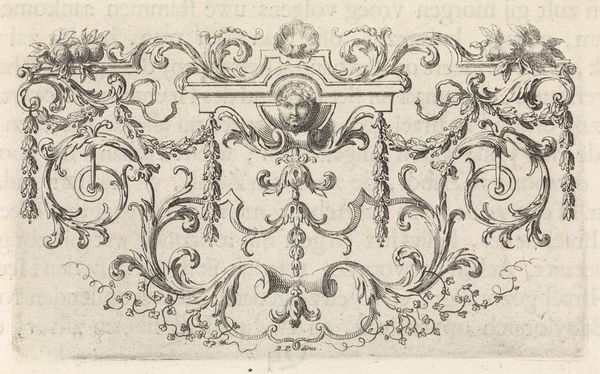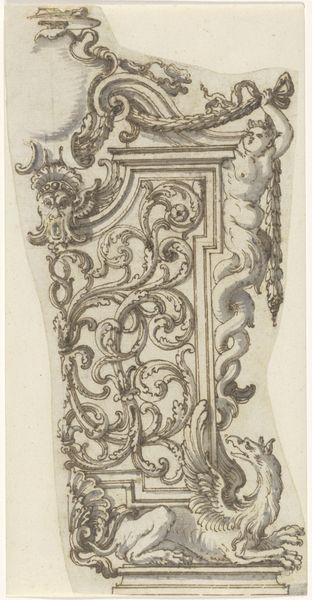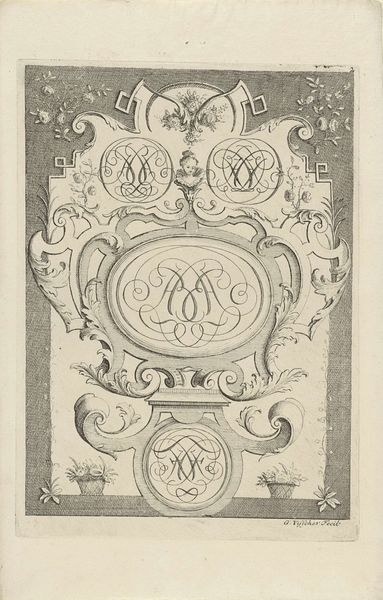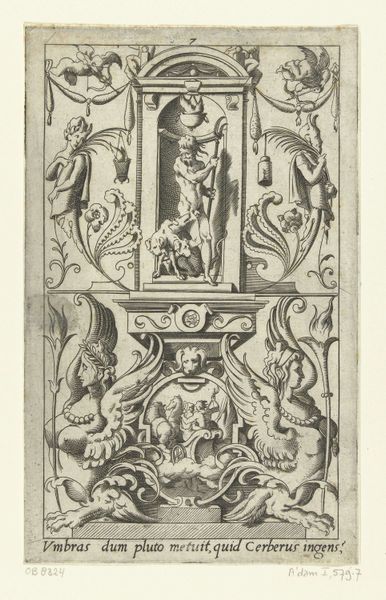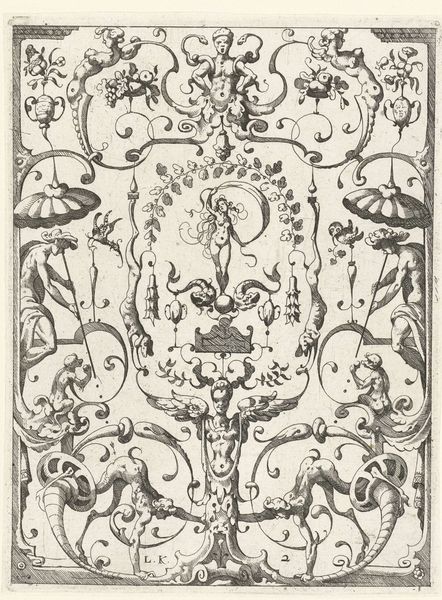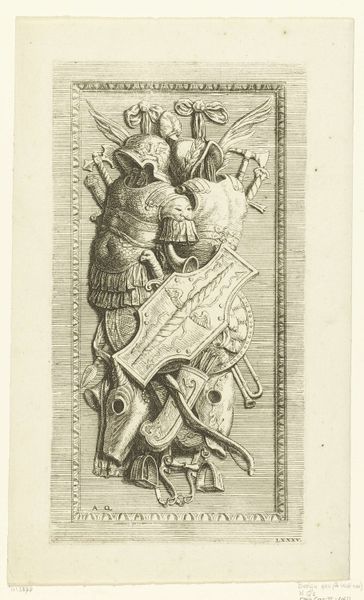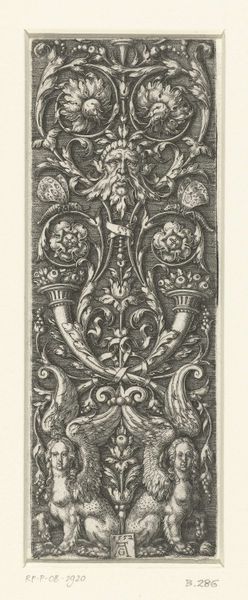
drawing, print, metal, engraving, architecture
#
drawing
#
baroque
# print
#
metal
#
pen illustration
#
pen sketch
#
old engraving style
#
form
#
geometric
#
engraving
#
architecture
Dimensions: height 259 mm, width 132 mm
Copyright: Rijks Museum: Open Domain
Editor: This engraving, “Twee Kapitelen,” created in 1668 by Hubert Quellinus, depicts two ornate capitals. The detail is just amazing, so intricate! What really strikes me is the kind of…regal and powerful presence they suggest, despite just being architectural elements. What do you see in this piece? Curator: It’s interesting you pick up on the "regal and powerful," as I immediately connect them to cultural memory. Capitals, you see, aren’t merely structural; they speak to symbolic power. Notice the figures incorporated – in the top one, are those sphinxes? The human-animal hybrid has been used in cultures for millennia to communicate wisdom and guardianship. Editor: Yes, they do seem to be sphinxes! And in the other capital there’s what looks like an eagle, and is that… a crown on its head? Curator: Precisely! And what does an eagle traditionally signify? Consider its soaring height, its sharp vision. Editor: I guess... Freedom? Power? Seeing it crowned makes me think of empires, like the Roman Empire. Curator: You’re on the right track. The crown certainly alludes to imperial authority. Now, think about placement. These images weren’t arbitrarily chosen. The symbols would have been seen, and felt, by anyone encountering them on a building. How do you think those architectural choices could have communicated the patron’s desired image to the world? Editor: So it's like a visual language. By choosing the eagle with the crown, it conveys strength, or even claims to power. Now I see it – it is far from ‘just’ decorative! Curator: Indeed. These seemingly “still” forms whisper volumes about ambition, authority, and the enduring need to leave one’s mark. Editor: I’ll never look at a building the same way again! Curator: That’s the power of seeing.
Comments
No comments
Be the first to comment and join the conversation on the ultimate creative platform.
